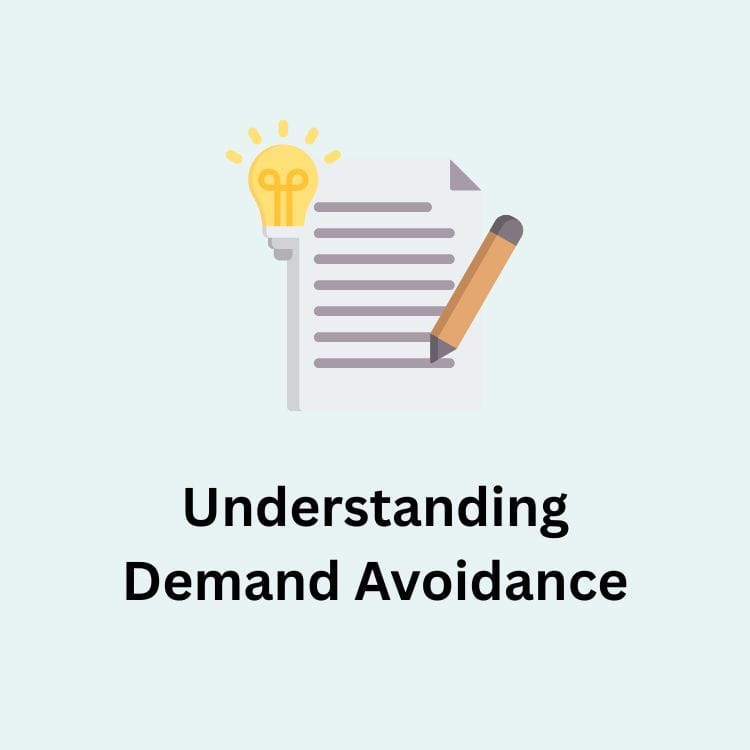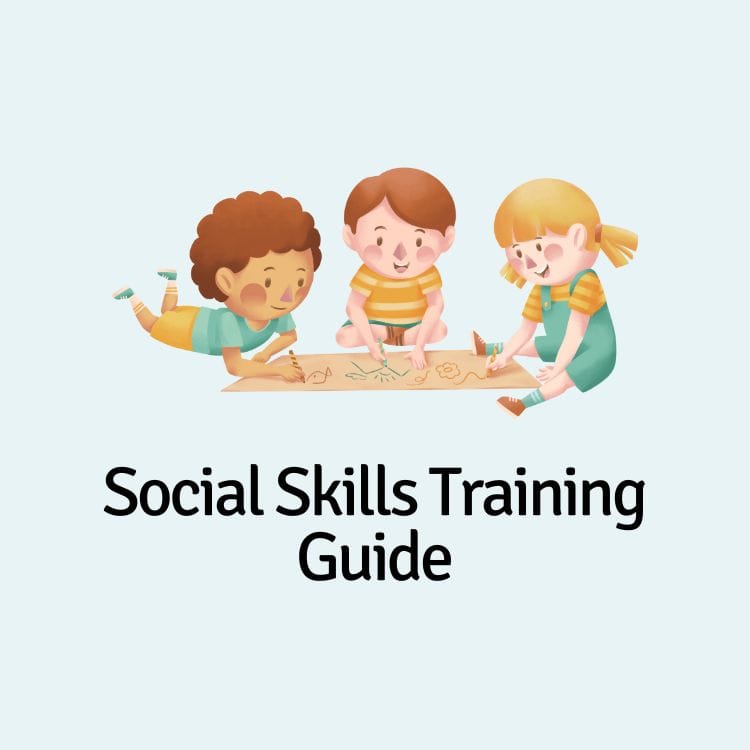Understanding and Addressing Maladaptive Behavior in Children with Autism Spectrum Disorder

Section 1: Introduction
Section 2: Identifying Maladaptive Behaviors in Children with ASD
Section 3: Understanding the Roots of Maladaptive Behavior in Autism
Section 4: Decoding the Meaning Behind Maladaptive Behaviors
Section 5: Long-Term Implications of Unaddressed Maladaptive Behaviors
Section 6: Strategies for Addressing Maladaptive Behaviors
Section 7: The Role of ABA Therapy in Managing Maladaptive Behaviors
FAQ: Frequently Asked Questions
Section 8: Conclusion
Children with Autism Spectrum Disorder (ASD), as well as people that are neurodiverse in general, might exhibit maladaptive behaviors, which can range from repetitive movements and sensory sensitivities to difficulties in communication and social interactions. These behaviors often serve as coping mechanisms or responses to overwhelming stimuli in their environment. For instance, a child might engage in repetitive actions like hand-flapping or rocking to self-regulate and manage sensory input. Some might demonstrate challenging behaviors such as meltdowns or aggression when they struggle to express their needs or when faced with unexpected changes. Understanding these behaviors is crucial as they offer vital communication cues about the child’s needs, emotions, or discomfort in specific situations. A key point to remember is that behavior IS communication, it is always telling us something.
For parents, doing their best to understand these behaviors is essential for several reasons. Firstly, it allows them to potentially decode their child’s actions and understand the underlying triggers. By recognizing what might cause distress or discomfort, parents can create supportive environments that minimize potential stressors. Additionally, understanding these behaviors enables parents to seek appropriate interventions or therapies tailored to address their child’s specific needs. It empowers parents to approach challenges with patience and empathy, fostering a stronger connection and trust between them and their child. Ultimately, this understanding can significantly improve the overall well-being and quality of life for both the child and their family. Additionally, it can give the parent information that they can pass on to others so that the child can be supported across numerous environments.
Maladaptive behaviors are frequently observed in individuals with Autism Spectrum Disorder (ASD) and can manifest in various forms, often serving as a response to challenges in social communication, sensory processing, or difficulties adapting to change. These behaviors (while not comprehensive) encompass a wide spectrum, including repetitive movements (such as hand-flapping or body rocking), insistence on routines, intense fixations on specific interests, sensory sensitivities (like aversion to certain sounds or textures), and difficulties in understanding or expressing emotions. These behaviors are not inherently negative but can become challenging when they interfere with the child’s daily life or hinder their social interactions and learning experiences. Ultimately, the goal should not be to “get rid” of these behaviors but manage them to the best of one’s ability.
For instance, a child with ASD might struggle with transitions and exhibit distress when routines are disrupted, leading to meltdowns or aggressive behaviors. Additionally, sensory sensitivities can cause discomfort or overwhelm in environments with bright lights, loud noises, or crowded spaces, making it challenging for the child to engage in typical activities. These behaviors can impact their daily life by affecting their ability to participate in school, socialize with peers, or engage in recreational activities. Furthermore, these challenges may hinder their emotional and social development, potentially leading to increased anxiety or difficulty forming relationships due to social misunderstandings or communication barriers.
This has a twofold effect on a person’s development. Some people might assume that the person doesn’t want to take part in these activities and is trying to escape. While this could be a possibility, the reality is that people who are neurodiverse crave being with others and participating just as much as everyone else. Sadly, maladaptive behaviors can create a perception that isn’t true, and unless the person has an advocate (in the home or community), it will remain inaccurate until the person’s situation changes.
The impact of maladaptive behaviors extends beyond immediate challenges, influencing the person’s developmental trajectory. Difficulty in managing these behaviors might result in increased stress for the child and their family, affecting their overall well-being. Furthermore, these behaviors can impede learning opportunities and hinder the acquisition of essential social and adaptive skills, potentially affecting their long-term independence and quality of life. Recognizing and addressing these behaviors through appropriate interventions and support systems is crucial in promoting a person’s holistic development and enhancing their ability to navigate the world around them.

Maladaptive behaviors often serve as a crucial form of communication for children with Autism Spectrum Disorder (ASD). These behaviors act as signals, offering insights into the child’s inner world, needs, and frustrations. For instance, a child engaging in repetitive movements or fixating on specific objects might be indicating a need for sensory stimulation or expressing their intense focus on a particular interest. Similarly, tantrums or meltdowns might signify overwhelming sensory input or difficulties in processing emotions or having their needs adequately understood. Understanding these behaviors as a form of communication allows caregivers and educators to decipher the underlying triggers and address the specific needs of the child effectively.
Applied Behavior Analysis (ABA) breaks this down in what is called the ABC model. ABC stands for Antecedent – Behavior – Consequence. All of this attempts to decode behavior and can explain future behaviors as well. The antecedent is what happened before the behavior occurred. The behavior is the reaction to the antecedent. The consequence is how things were handled after the behavior. An example might be a person trying to use an iPad. The iPad, for whatever reason isn’t working (antecedent), and the person gets frustrated and throws it across the room (the behavior). There could be several consequences but let’s just say the iPad breaks. This can also be another antecedent creating even more behaviors. This is where “knowing” a person and their possible triggers is crucial.
Recognizing the individual context (antecedent) and experiences of each child with ASD is paramount in understanding and responding (consequence) to maladaptive behaviors. What might trigger distress or discomfort for one person might not affect another person in the same way. By acknowledging and considering the unique sensory sensitivities, communication styles, and personal experiences of each child, caregivers can tailor interventions and support strategies to better meet their individual needs. This personalized approach fosters a deeper understanding of the child’s challenges and strengths, enabling caregivers to create environments that minimize triggers and promote positive behaviors, ultimately enhancing a person’s well-being, independence and development.
Another thing to keep in mind is that behavior can be informed by setting events. For example, let’s say someone gets upset when asked to clean up their room on Friday’s. Initially, this behavior could be looked at as the person trying to escape from the task they are being asked to complete. One could give them a way to communicate how they feel without getting upset. However, what was it about Friday’s that caused this person to become upset and not other days when there are demands placed on them? Perhaps something is happening at school that is upsetting them? Or, something is upsetting them at home on this day? Maybe on Thursday night they stay up later because they are excited about the weekend? The person could be tired and this is why they had lower emotional endurance for chores than on other days?

Maladaptive behaviors often serve as a crucial form of communication for children with Autism Spectrum Disorder (ASD). These behaviors act as signals, offering insights into the child’s inner world, needs, and frustrations. For instance, a child engaging in repetitive movements or fixating on specific objects might be indicating a need for sensory stimulation or expressing their intense focus on a particular interest. Similarly, tantrums or meltdowns might signify overwhelming sensory input or difficulties in processing emotions or having their needs adequately understood. Understanding these behaviors as a form of communication allows caregivers and educators to decipher the underlying triggers and address the specific needs of the child effectively.
Applied Behavior Analysis (ABA) breaks this down in what is called the ABC model. ABC stands for Antecedent – Behavior – Consequence. All of this attempts to decode behavior and can explain future behaviors as well. The antecedent is what happened before the behavior occurred. The behavior is the reaction to the antecedent. The consequence is how things were handled after the behavior. An example might be a person trying to use an iPad. The iPad, for whatever reason isn’t working (antecedent), and the person gets frustrated and throws it across the room (the behavior). There could be several consequences but let’s just say the iPad breaks. This can also be another antecedent creating even more behaviors. This is where “knowing” a person and their possible triggers is crucial.
Recognizing the individual context (antecedent) and experiences of each child with ASD is paramount in understanding and responding (consequence) to maladaptive behaviors. What might trigger distress or discomfort for one person might not affect another person in the same way. By acknowledging and considering the unique sensory sensitivities, communication styles, and personal experiences of each child, caregivers can tailor interventions and support strategies to better meet their individual needs. This personalized approach fosters a deeper understanding of the child’s challenges and strengths, enabling caregivers to create environments that minimize triggers and promote positive behaviors, ultimately enhancing a person’s well-being, independence and development.
When maladaptive behaviors in children with Autism Spectrum Disorder (ASD) are left unaddressed, they can significantly impact various aspects of their lives as they age. This is why early intervention services such as ABA, done in a person centered way, are so crucial to a person’s growth and socialization. Untreated behaviors may lead to increased isolation or difficulty forming and maintaining relationships. Emotional challenges might escalate, causing higher levels of stress, anxiety, or even depression due to ongoing struggles with communication, sensory overload, and frustration in navigating social situations. In an educational setting, unmanaged behaviors could hinder learning opportunities, affecting academic progress (and the progress of others in the room) and potentially leading to social exclusion or difficulties in accessing educational resources. Without intervention, these challenges can persist into adolescence and adulthood, affecting overall well-being and quality of life.
Early intervention, such as ABA therapy, plays a crucial role in addressing and managing maladaptive behaviors in children with ASD. ABA therapy focuses on identifying and modifying behaviors by breaking them down into smaller components (see the ABC model mentioned above) and using positive reinforcement to teach new skills and adaptive behaviors. This early intervention not only targets maladaptive behaviors directly but also enhances communication, social skills, and daily living abilities, providing people who are neurodiverse the tools to navigate their world more effectively. (While ABA therapy is often used for people with autism, it can be used with people who are and are not neurodiverse).
Organizations like Autism Behavior Services, Inc. (ABSI) are instrumental in providing support and resources to families dealing with ASD. ABSI offers ABA therapy and other specialized services tailored to the individual needs of children, teens, and adults with autism. Their role extends beyond therapy sessions; they also provide guidance and support to families, offering strategies and resources to manage behaviors at home, school, and within the community at large. By collaborating with families, ABSI aims to create comprehensive support networks that empower both the person receiving the therapy and their caregivers, fostering an environment conducive to the child’s growth and development. Early intervention and the supportive services provided by organizations like ABSI play a pivotal role in positively shaping the outcomes and future prospects for children with ASD.
Consistency, structure, and positive reinforcement form the cornerstone of managing maladaptive behaviors in children. Establishing clear and consistent expectations helps provide a structured environment that can reduce anxiety and uncertainty for a child with behavioral challenges. Structure is key for helping many people stay focused, engaged, and calm as they navigate through their day. Consistency involves enforcing rules and consequences consistently across different situations and caregivers, providing a predictable framework for behavior. Implementing routines and schedules can also offer structure, helping children anticipate what comes next and fostering a sense of security. At the same time, it’s good to front load if there are any changes, as well as work on what to do when they occur (utilizing things such as social stories can go a long way toward assisting with this).
Positive reinforcement is a powerful tool in shaping behaviors. It involves rewarding desired behaviors to increase the likelihood of their recurrence. Praising and rewarding a person for exhibiting positive behaviors encourages them to continue these actions. There are numerous ways to do this and, it is recommended, that you take a “person centered approach” so that the reinforcers used are that much more tailored to the individual in question. Moreover, offering choices when feasible and providing opportunities for the child to make decisions within set boundaries can empower them and reduce resistance to undesired behaviors. Additionally, creating a supportive and understanding environment at home involves fostering open communication, patience, and empathy. It’s essential to acknowledge and validate a person’s feelings while maintaining clear communication about expectations and boundaries. Encouraging hobbies or activities they enjoy can serve as positive outlets for emotional expression and can contribute to reducing stress and challenging behaviors. Finally, ensuring that caregivers practice self-care is vital; taking breaks and seeking support when needed allows for refreshed energy and a more effective caregiving approach. “Taking Care of You” isn’t just a canned motto, but something that should be taken seriously by everyone involved.

Applied Behavior Analysis (ABA) therapy, mentioned above, is a systematic and evidence-based approach to understanding and modifying behaviors. It operates on the principle that behavior is influenced by environmental factors and can be shaped through reinforcement and consequences (that are not punitive). ABA therapy involves breaking down complex behaviors into smaller components, analyzing these behaviors in specific contexts, and implementing strategies to either increase desirable behaviors or decrease/manage maladaptive ones. Techniques such as positive reinforcement, prompting, shaping, and functional behavior analysis are commonly used within ABA therapy to teach new skills and reduce/manage behaviors that interfere with learning or social interactions. Ultimately, the goal is independence for the individual so they don’t need somebody working on these things with them all the time.
In children with Autism Spectrum Disorder (ASD), ABA therapy plays a crucial role in understanding and addressing maladaptive behaviors. It focuses on identifying the underlying reasons for behaviors, such as communication difficulties or sensory sensitivities, and tailoring interventions to address these root causes. By using techniques like reinforcement to encourage positive behaviors and systematically fading out undesirable ones, ABA therapy helps people with ASD learn new skills, improve social interactions, enhance communication abilities, and reduce behaviors that may impede their daily functioning. The more the emotional speedbumps are removed, the easier it will be for a person to navigate all the aspects of their lives. In addition to this, when a speedbump does occur, they will have the tools, strategies, and emotional endurance to overcome it.
Autism Behavior Services, Inc. specializes in providing ABA therapy services for individuals with autism. We offer comprehensive assessments to understand each person’s unique needs and design personalized intervention plans based on these assessments. Our services encompass a range of interventions, including behavior reduction, skill acquisition, social skills training, and parent training. Through one-on-one therapy sessions, group activities, social skills groups (offered in person and virtually), and collaboration with families and caregivers, Autism Behavior Services, Inc. aims to empower children with ASD by fostering positive behavioral changes and facilitating skill development to enhance their quality of life.
Depending on the severity of the behavior try and get them into an area (wherever you are, home or community) where they and everyone else will be safe. Make every effort to preserve their dignity as oftentimes maladaptive behaviors are things they’d rather NOT be doing. Safety is paramount in any circumstance dealing with maladaptive behaviors.
This often comes with time and recognizing/knowing your child when they aren’t having these moments and when they are triggered. Medical professionals can be of great assistance here as they can assist in illuminating things about your loved one that you may not have known/understood before.
Please visit our website at https://autismbehaviorservices.com/ which features a wealth of easy to understand resources such as information on autism and neurodiversity, tips for families, social stories, blogs, and more! You can also call us for a free consultation at 1-855-581-0100 or email us at [email protected].
Understanding the Concept of Demand Avoidance in Autism
A Comprehensive Guide to Social Skills Training


